With Felice Mazzù out at RSC Anderlecht after a torrid start to this season with the Belgian giants, many names have been linked with the hot seat at the Brussels club. One of those names being linked is Hernán Losada, with the Argentine previously managing in Belgium with Beerschot.
Losada led Beerschot to promotion in the 2019/20 season, before playing a part in comfortably keeping them up the following season. Though his time in MLS with DC United was not the most successful, his tactics at the beginning of his tenure in the American capital helped keep DC United in a comfortable spot on the table.
This tactical analysis and scout report will take a look at a couple of key trends that stand out when looking at the Argentine manager’s time in charge of both Beerschot and DC United. It will also take a look at the current Anderlecht squad, and how the team may look under the 40-year-old’s tutelage.
Preferred formation and a quick look at tactics
In both of his previous managerial stops, Losada preferred to set his sides up in a back three system, with him preferring either a 3-4-3 or a 3-4-2-1. Losada’s sides are also heavily attack-minded and are prone to leaking goals defensively, with this being illustrated by the goals for and against records at both of his previous clubs. During the 2020/21 season with Beerschot, the side finished in 9th place, scoring the most goals of any side finishing outside of a playoff position with 58. The problem came from a defensive standpoint, with Beerschot conceding 64 goals in the 2020/21 season, the third most in the league.
This trend continued when he moved to MLS, with DC United finishing in 8th place in his sole full season in charge. DC’s 56 goals scored were the joint second most in the Eastern Conference in 2021, while their 54 goals conceded were joint third most. In both cases, Losada’s sides missed out on the playoffs, which could be a concern should he take charge of Anderlecht, with the side already in a poor position in the table at the time of Mazzu’s sacking. As this tactical analysis continues, we will discuss in more detail some of the Argentine’s tactical principles.
Winning the ball back in advanced areas and attacking with numbers
As mentioned previously, Hernán Losada’s sides are known to want to put pressure on the opposition high up the pitch and attack in large numbers. While this strategy leaves them susceptible at the back due to the numbers being pushed forward, it also allows them to be more likely to win the ball in more advanced positions, and therefore, have more goalscoring opportunities.
During this season, one of Losada’s most important players at Beerschot was Austrian attacking midfielder Raphael Holzhauser. In that 2020/21 season with Beerschot, the midfielder managed 16 goals and 16 assists in 34 appearances in the Belgian Pro League, by far the most influential attacker in the side.
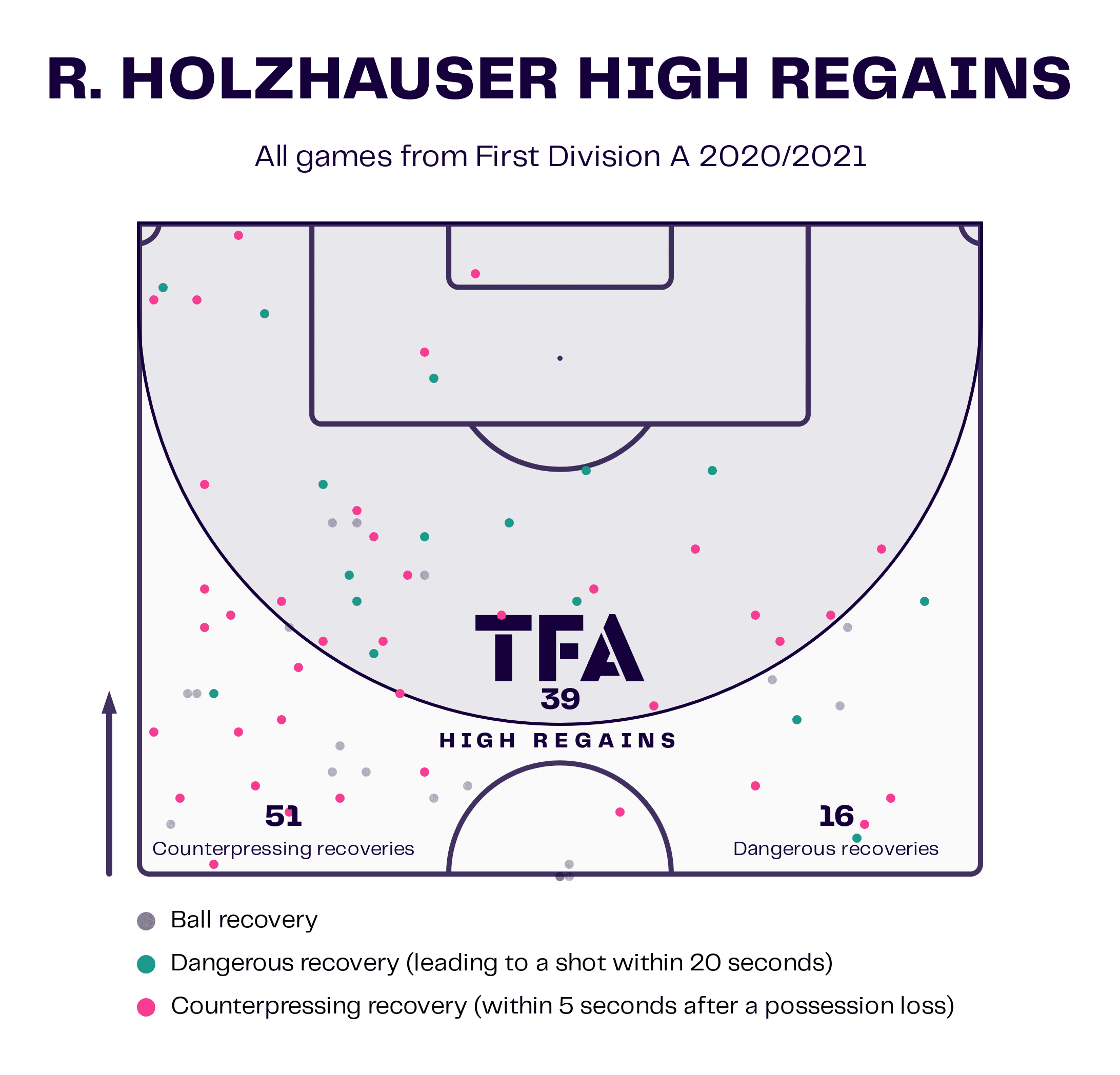
The data viz above shows the amount of high regains that the Austrian was successful in during that season, as well as his counterpressing recoveries and dangerous recoveries. This is able to illustrate the numbers that Losada opted to send forward when the opposition were in possession, opting to try and win the ball back in advanced areas to then have a shorter distance to go to the goal. The following are some examples of this during Losada’s time managing Beerschot.
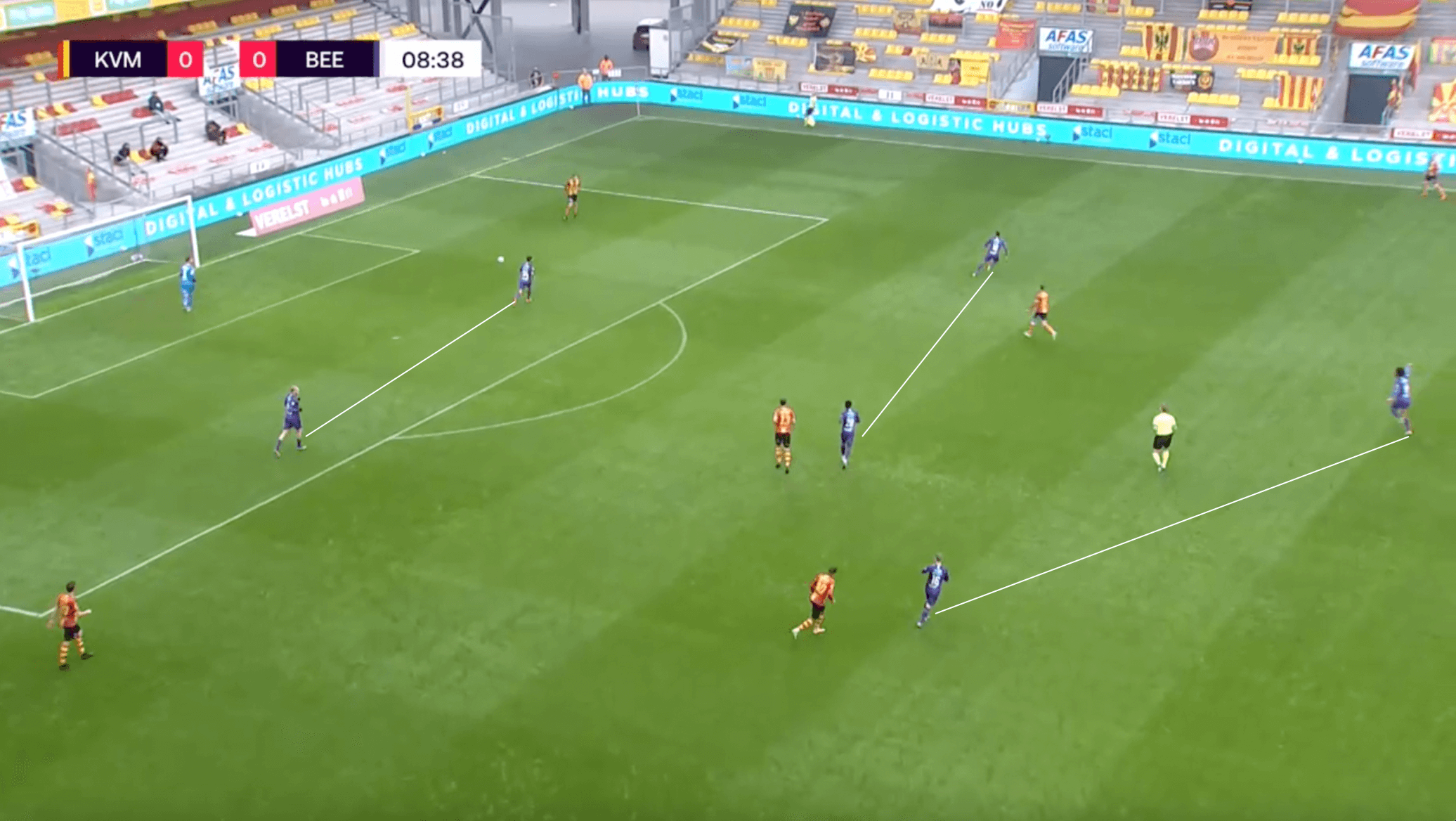
The image above shows an example of this tactic of attacking with numbers to try and win back possession in advanced positions. Notice how the Beerschot players are set up in almost a 4-2-2-2 formation, with the four defenders positioned in the defensive half of the field. The six more advanced Beerschot players are looking to put pressure on the Mechelen defence as they are attempting to build out from the back.
In this phase of play, Beerschot looked to force the play to one side and then quickly close the ball carrier down, pinning them in and regaining possession in a dangerous area as a result. They were not successful in this example, with Mechelen playing the ball to the weak side and getting into the Beerschot defensive half.
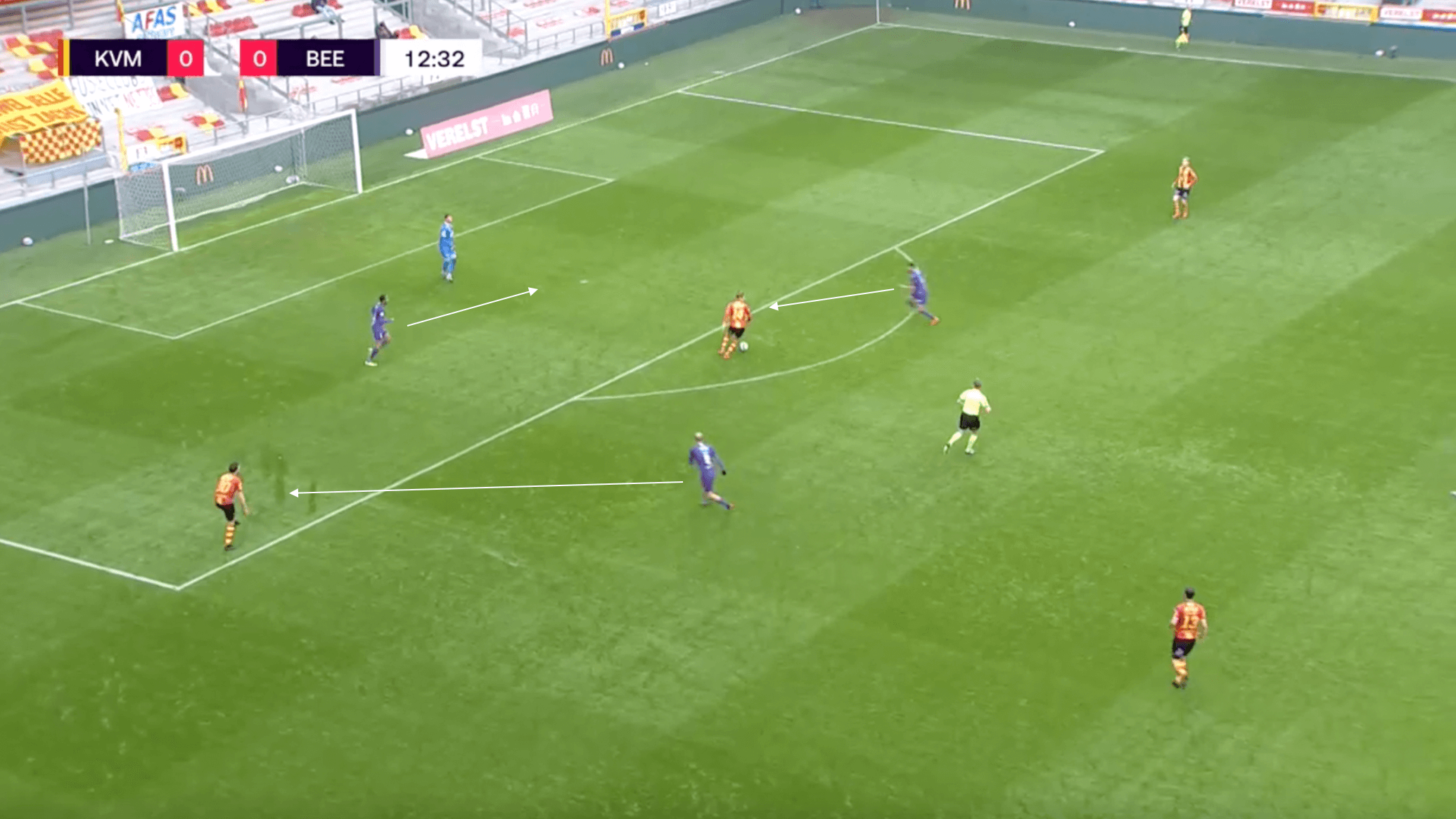
The image above shows a successful example of Losada’s counterpressing style, which allows Beerschot to win the ball back in an advanced area and create a chance. As the Mechelen centre-back receives possession from the goalkeeper, the Beerschot attackers quickly look to press and close down any passing angles for the defender.
As the arrows show, the one Beerschot attacker moves to close the passing lane to the fullback, eliminating him as a passing option. The striker moves to cover the passing lane to the goalkeeper, making a potential backpass risky. The final attacker moves to close down the player in possession, doing so at an angle that prevents a pass to the fullback. The result is a heavy touch from the centre-back as he has no options and is forced to dwell on the ball. This results in the attacker closing him down, winning possession and proceeding to round the goalkeeper and score for Beerschot.
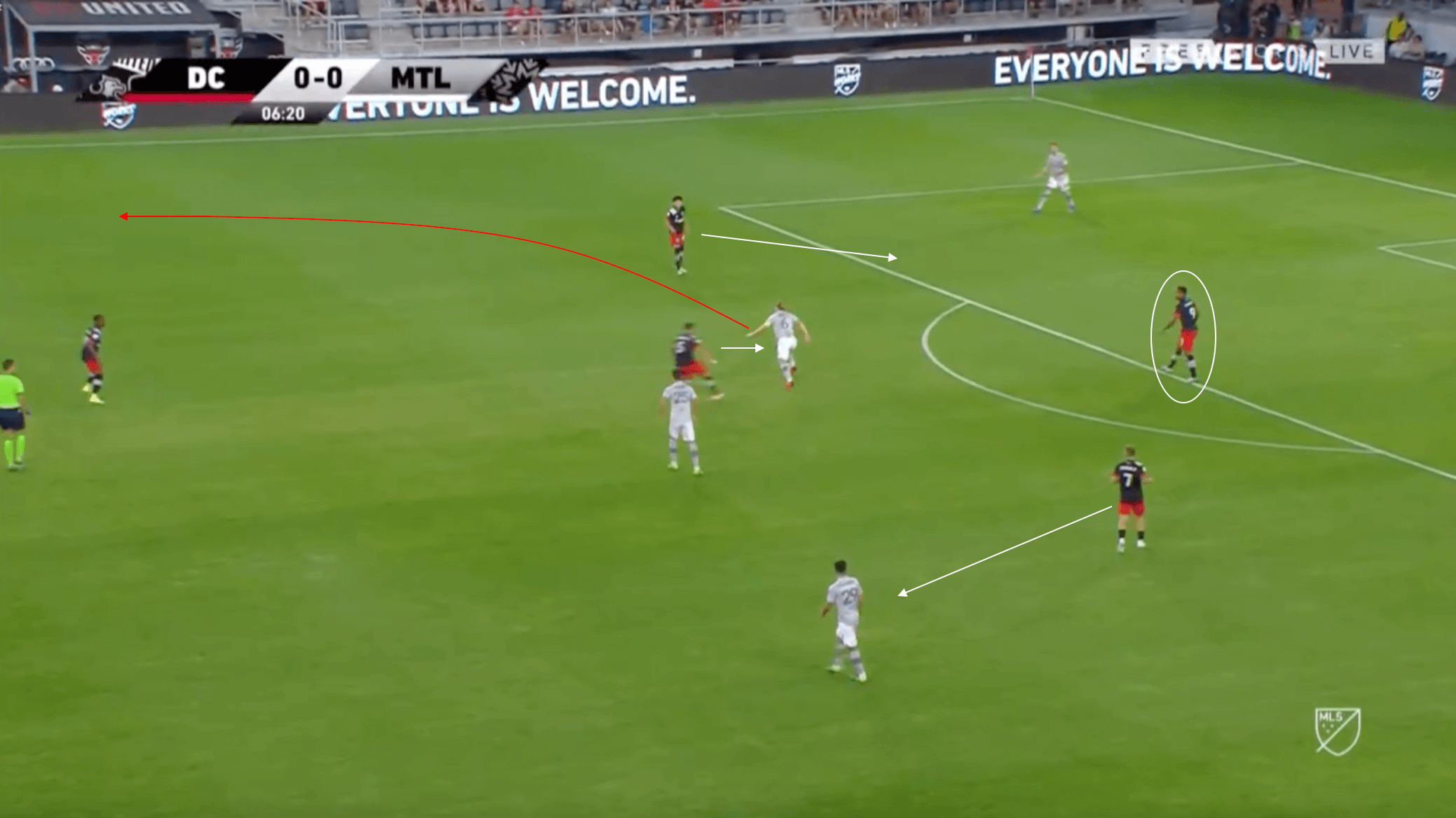
The image above shows another example of this counterpressing ability, as well as pushing numbers forward to create numerical advantages in these advanced areas, this time from Losada’s time in charge of DC United. As we can see, DC are outnumbering the Montreal players five to four in the attacking half. In this phase of play, Montreal are attempting to build out from the back, but the DC United players look to close down the player in possession as well as close off any possible passing lanes.
Left with no other options, the defender is forced to play the ball long towards the halfway line. It finds its way to a DC midfielder who is unmarked in the attacking half. As a result, this allows them to start another attacking phase of play and gives them a numerical advantage as the ball finds its way back towards the opposition’s penalty box.
Aggressive defending and holding a high line
When it comes to looking at the defensive setup that Hernán Losada has utilised at his two previous managerial stops, the main thing that stands out is that it is aggressive, front-foot defending which starts with the centre-backs holding such a high line in the defensive phase of play. This is a major reason why his sides have conceded so many goals the last couple of seasons, because of their tendency to try and keep a high line and defend on the front foot, something that is even more dangerous when operating out of a back three system.
This section will take a look at this aggressive defending, and show why it can sometimes be beneficial, but also look at the harm that it could possibly do when it comes to conceding so many goals.
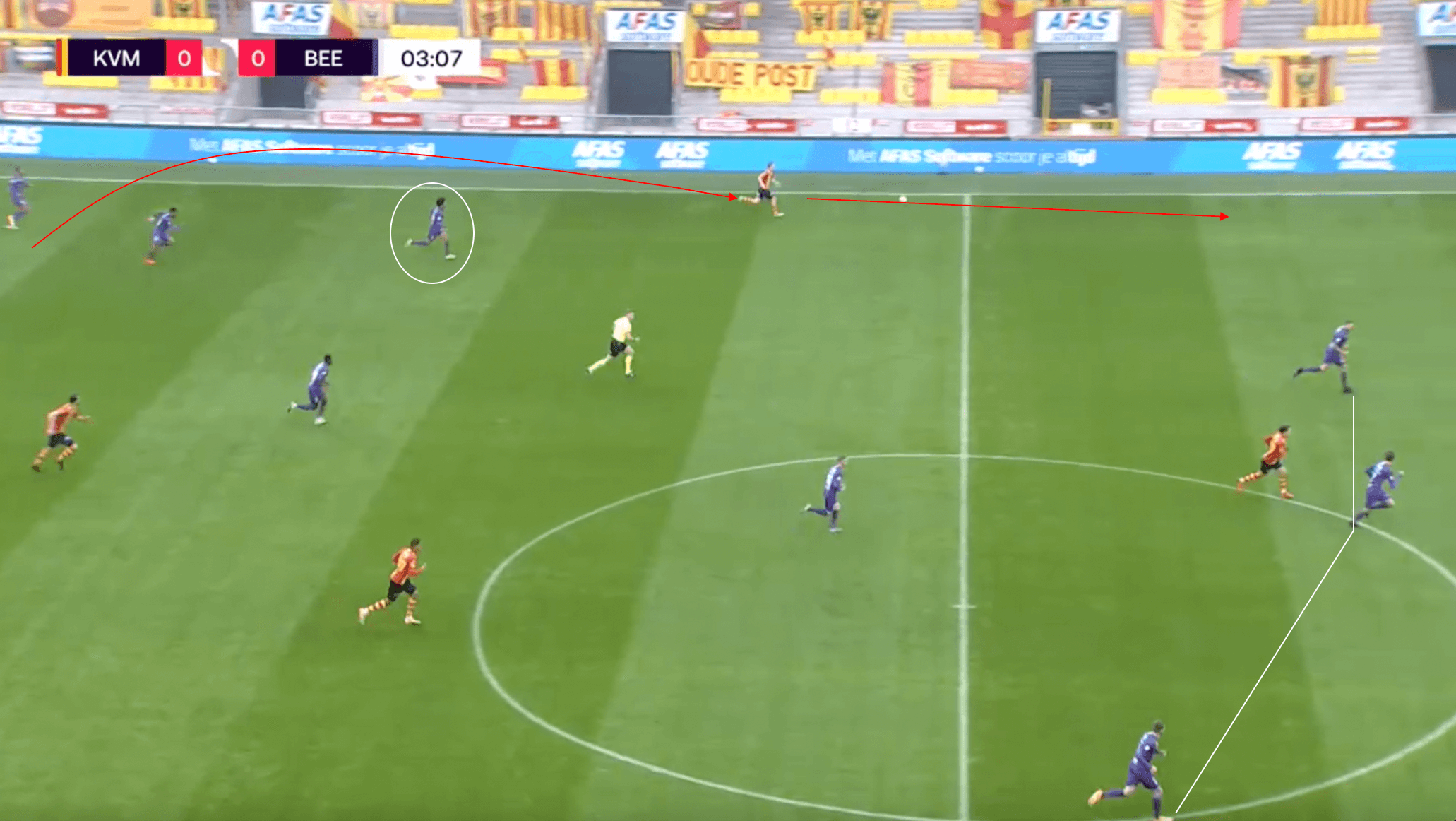
The image above shows an example of why being an aggressive front-foot defending team can be a risk at times. In the phase of play above, Mechelen were able to get out of the high press that Beerschot were trying to trap them with. As a result, the ball over the top releases the Mechelen winger and allows him acres of space to run into down the right flank.
The right-sided wingback/midfielder is caught far advanced and out of position, and the centre-backs are forced to run back and face their own goal, something that they do not want to do. Because of the distance back that the wingback has to travel, the attacker is able to get all the way to just outside the penalty box before the outside centre-back is forced to foul him to stop him from running through on goal.
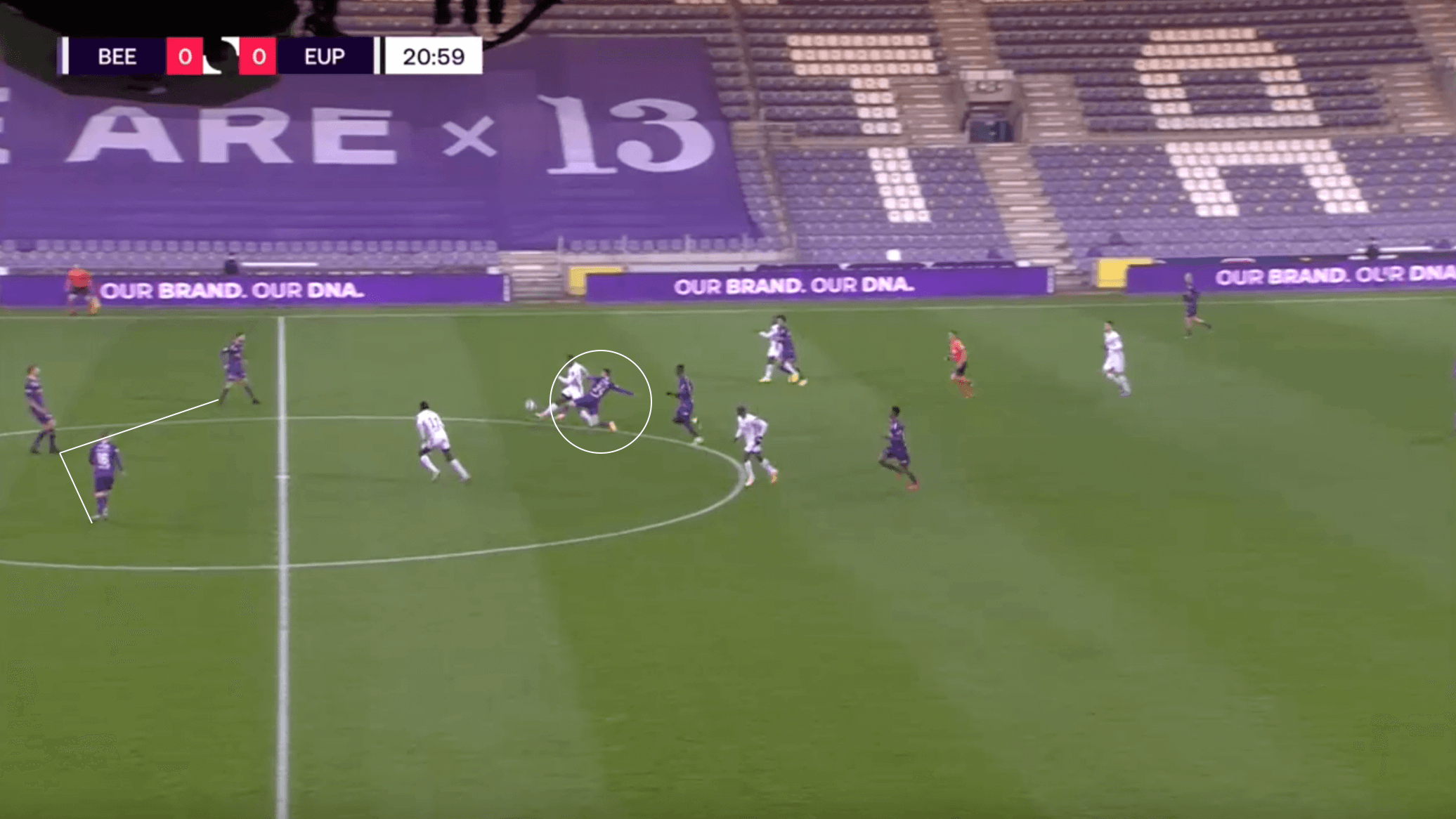
The image above shows an example of the positives when it comes to being successful at front-foot aggressive defending. After losing possession in the attacking half of the field, the defensive phase begins for Beerschot. Though Eupen are looking to counter quickly, the Beerschot midfielders are able to quickly recover, with the one putting in a very good tackle on the player in possession, which allows the home side to regain possession and continue to build.
Notice also how the three centre-backs are again positioned so close to the midfield line, even during an opposition counterattack. This illustrates the tendency for these centre-backs in Losada’s system to try and defend on the front foot, even if it means the space behind them is exposed should the attackers get through. While dangerous, this style of defending has the possibility to be highly effective, as this example has shown.
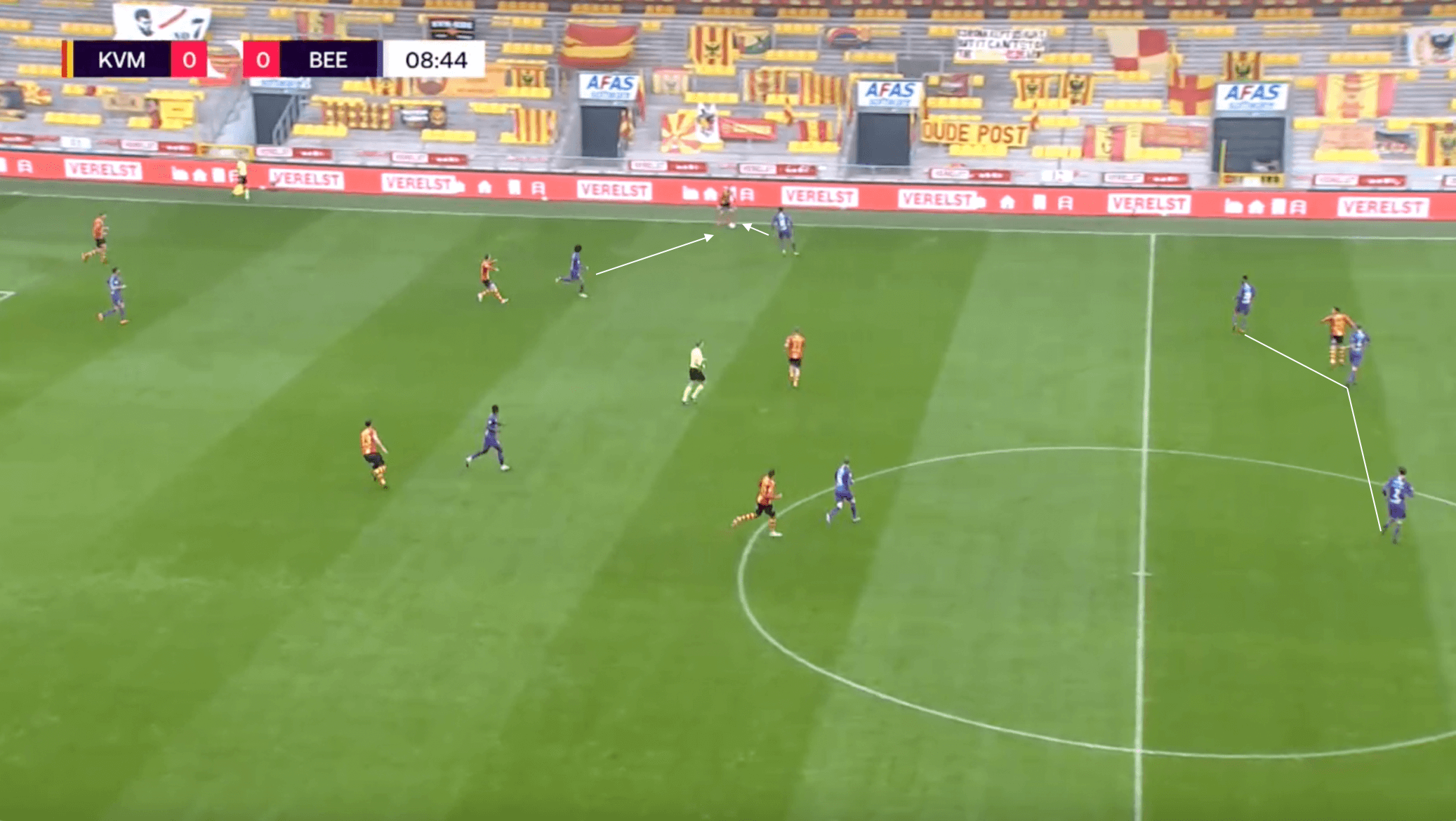
The image above again shows the high defensive line and aggressive front foot defending on display in Hernán Losada’s sides. In this phase of play, the Mechelen player receives possession on the far touchline and is instantly closed down by two Beerschot players, forcing him to play the ball back towards the danger of the counterpressing forwards.
The back three of Beerschot is also holding a super high line, especially with the ball being possessed by the opposition close to the midfield line. This is the dangerous game that Losada plays when having his team set up defensively. When it works, it is great, with so many players forward that a meaningful attacking transition could occur. The problem is the high number of goals that could be conceded, but the risk is worth the reward, especially in the case of the Argentine manager, who led Beerschot to a 9th-placed finish with this style of defensive play.
Conclusion
If Hernán Losada was given the job at Anderlecht, he would have a lot of talented footballers at his disposal. Examples include former Tottenham Hotspur defender Jan Vertonghen, former Inter Milan striker Sebastiano Esposito, and former AC Milan target Yari Verschaeren. There is no doubt that the resources are there for him to succeed, but the key would be time, something his predecessor Felice Mazzù did not get much of.
As this tactical analysis and scout report has shown, Anderlecht fans should be expecting counterpressing and numbers forward at all times in attacking phases of play, while also knowing that the defensive tactics could leave them exposed in behind the defence at times. While no one has yet been given the vacant job, it is no wonder why the Argentine manager is one of the favourites.





Comments